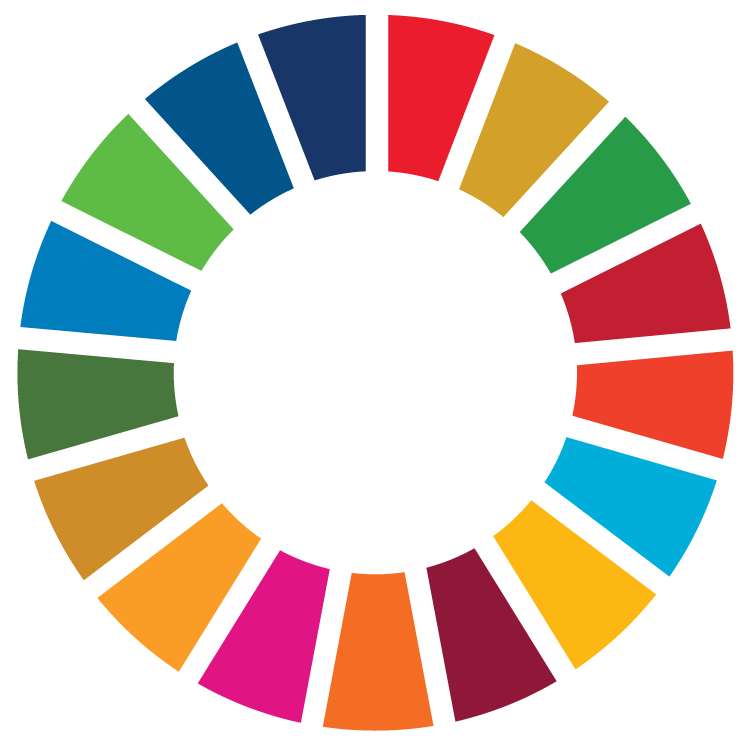Text traduït
Aquesta assignatura s'imparteix en anglès. El pla docent en català és una traducció de l'anglès.
La traducció al català està actualitzada i és equivalent a l'original.
Si ho prefereixes, consulta la traducció!
Texto traducido
Esta asignatura se imparte en inglés. El plan docente en español es una traducción del inglés.
La traducción al español está actualizada y es equivalente al original.
Si lo prefieres, ¡consulta la traducción!
Original text
This subject is taught in English. The course guide was originally written in English.
Course
Advertising and Public Relations
Subject
Personal Branding
Type
Compulsory (CO)
Academic year
2
Credits
3.0
Semester
2nd
| Group | Language of instruction | Teachers |
|---|---|---|
| G25, classroom instruction, afternoons | English | Manuel Arribas Ibar |
Sustainable Development Goals (SDG)

- 5. Gender equality
Objectives
The goal of this course is to define, test and launch a unique personal brand.
The course is organized into three blocks:
- Creative, strategic thinking for purposeful careers
- Promotion through branding techniques
- Obtaining a professional reputation by using social skills
Learning outcomes
- Identify advertising and public relations theories, processes, structures and techniques that underlie the functions of the departments in an advertising agency, creative boutique, consultancy or media centre in conventional, virtual and emerging contexts.
- Undertake further studies with a high degree of autonomy.
- Apply marketing, advertising and public relations concepts, theories, methods and techniques in order to formulate and put into practice specific strategies for products, brands and organisations.
- Apply conventional and non-conventional advertising communication techniques to effectively convey messages, harnessing creativity and innovation, while respecting linguistic, social, cultural, gender and economic diversity.
Content
- Introduction to personal branding
- The basics, how to build a brand in the digital economy, how to stand out from the crowd
- Millennials in the workforce
- Managing expectations, what it takes to be great, 10,000 hour rule, reflection, what is success
- Developing professional skills
- Where to compete, strengths and weaknesses, decision models, long-term thinking
- Audience and positioning
- Differentiation, the right target for you, do your research, implementation, internal mission statement
- Branding
- Brands today, brands tomorrow, enduring brands, distribution strategies, reputation crisis, brand equity
- Promotion
- Storytelling, what is the pitch for you, advertising greats, the creative process, rules of virality, inbound marketing
- The psychology of choice
- How humans make decisions, cognitive biases, perception, marketing implications
- Communication
- Writing, public speaking, everything else
- Social media and offline
- Pick your platform, gaining exposure, visibility and relevance, monitoring, Google yourself, influencers
- Getting your first job
- How to get there, PB toolkit, the interview process, adjust your message, first impressions matter
- Professionality
- What professionality really means, how to increase my productivity, management and behavioural economics
- Sales and negotiation
- Soft skills, how (not) to win arguments, the science of persuasion, power dynamics, why do you trust me
- Entrepreneurship
- Leadership: it can be taught, the downside of it, competition is for losers, micro speed, macro patience
- Networking
- Map your relationships, the structure of networks, be attractive, not likeable, good sense of humour, cold calling
- Next steps
- Always pitch your brand, purpose vs. happiness, infinite futures, reinvention
Evaluation
The course is based on continuous student evaluation with an important weight on the acquisition of knowledge and skills:
- Active class participation (readings and discussions): 15%
- Active class participation (skills activities): 15%
- Career questionnaire (introspection exercise on designing a meaningful career): 30%
- Self-marketing plan (career development exercise through branding techniques): 40%
Methodology
The methodology of the course is based on the autonomy of the student, the role of the professor as mentor, and systematic and continued work. Specifically, students should:
- Study the corresponding reading for each topic before it is covered for the first time.
- Read and reflect on the readings before class.
- Identify and synthesise the most important aspects of each reading.
Bibliography
Key references
- Carnegie, D. (2010). How To Win Friends And Influence People. Simon & Schuster.
- Harari, N. (2015). Sapiens: A Brief History of Humankind. Random House.
- Newport, C. (2016). So Good They Can't Ignore You: Why Skills Trump Passion in the Quest for Work You Love. Piatkus.
- Pfeffer, J. (2010). Power: Why Some People Have It—and Others Don't. Harper Business.
- Sullivan, L. (2016). Hey, Whipple, Squeeze This: The Classic Guide to Creating Great Ads (5 ed.). Wiley John + Sons.
Further reading
Teachers will provide complementary bibliography and compulsory reading throughout the course via the Virtual Campus.